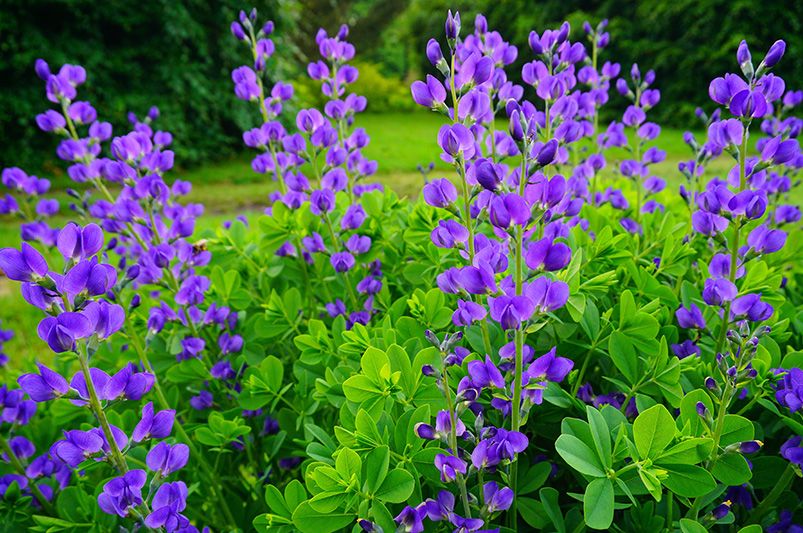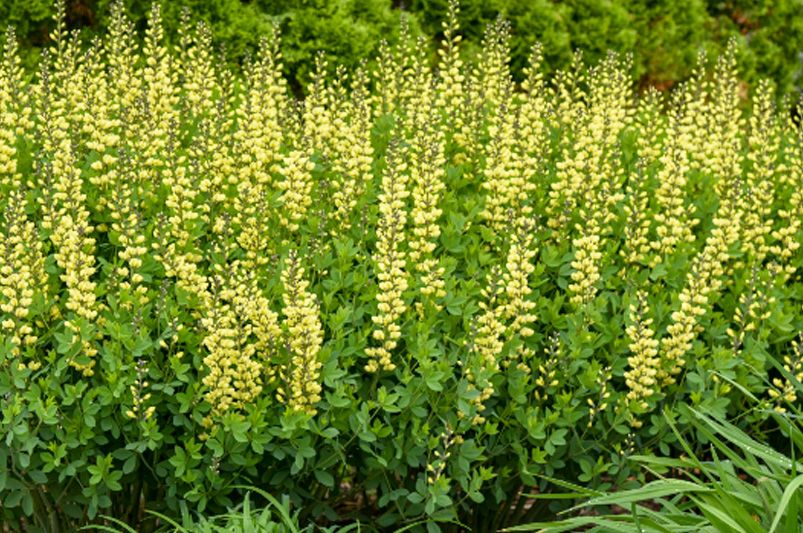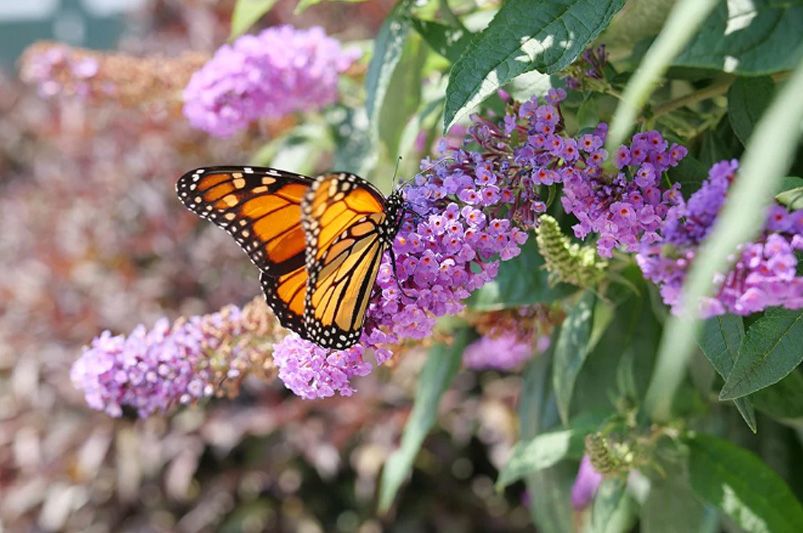
Discover the Beauty and Resilience of False Indigo
Published: 24/07/2024 | Updated: 24/07/2024
ShrubHub's Guide to False Indigo
Introducing the captivating False Indigo, a plant known for its striking flowers and hardiness. Whether you’re looking to add a touch of elegance to your garden or want a low-maintenance plant with high visual impact, False Indigo is the perfect choice. In today’s article, we’ll explore the beauty and versatility of False Indigo and share expert advice on how to plant, grow, and care for these stunning plants.


This article is part of our weekly series packed with expert recommendations, budget-friendly landscaping ideas, and detailed plant information to help you create your dream garden. Don’t forget to check out our blog at shrubhub.com/blog for more tips and inspiration.
But first, let’s dive into the varieties of False Indigo that you can incorporate into your garden.
Varieties of False Indigo
Blue False Indigo The Blue False Indigo (Baptisia australis) is a perennial that stands out with its stunning blue flowers that bloom in late spring to early summer. The flowers are arranged in elegant spikes, creating a striking contrast against its rich green foliage. Growing up to 3-4 feet tall and wide, this plant is perfect for borders, mixed beds, and naturalized areas. It's known for its hardiness and ability to thrive in a variety of soil conditions.

Decadence Lemon Meringue False Indigo The Decadence Lemon Meringue False Indigo (Baptisia 'Lemon Meringue') features bright yellow flowers that bring a cheerful presence to any garden. The flowers bloom in late spring on sturdy spikes above the attractive blue-green foliage. This variety grows to about 3 feet tall and wide, making it an excellent choice for sunny borders and cottage gardens. Its unique color and strong stems make it a standout addition.

Decadence Pink Truffles False Indigo The Decadence Pink Truffles False Indigo (Baptisia 'Pink Truffles') boasts lovely pink flowers with a soft lavender hue. The blooms appear in late spring, creating a beautiful display against the plant's gray-green foliage. This compact variety reaches about 3 feet in height and width, making it ideal for smaller gardens or as part of a mixed perennial bed. Its delicate color and robust nature make it a favorite among gardeners.
Plantation & Growth
Planting False Indigo is straightforward and rewarding. These plants thrive in well-drained soil and prefer a sunny location, although they can tolerate partial shade. Dig a hole twice as wide and deep as the root ball to plant. Space the plants about 3-4 feet apart for growth and good air circulation. Water thoroughly after planting to help the roots establish.
False Indigo is adaptable to various soil types but performs best in slightly acidic to neutral soil. It's a hardy plant that can tolerate drought once established, although regular watering during prolonged dry spells will promote optimal growth.
Plant Care
Proper care ensures that your False Indigo remains healthy and vibrant. Water newly planted False Indigo regularly until they are established, ensuring the soil remains consistently moist but not waterlogged. Once established, these plants are relatively drought-tolerant and only need watering during extended dry periods.
Apply a balanced, slow-release fertilizer in early spring to promote healthy growth and abundant blooms. Mulching around the base of the plants helps retain soil moisture and suppress weeds. Additionally, removing spent flowers and dead foliage will keep the plant looking tidy and encourage new growth.
Pruning & Propagation
Pruning False Indigo is simple yet beneficial for maintaining its health and appearance. Remove spent flower stalks after blooming to prevent the plant from diverting energy into seed production. Trim back any yellowing or dead foliage as needed throughout the growing season.
Propagation of False Indigo can be done through division or seeds. The best time to divide is in early spring or late summer. To divide:
- Dig up the clump and gently separate the roots into smaller sections, each with a healthy root system.
- Replant the divisions promptly and water well to help them establish.
- For seeds, collect them in late summer and sow them in a well-draining soil mix.
Common Pests & Diseases
False Indigo is generally resistant to pests and diseases, but monitoring for potential issues is still important. Common pests include aphids and caterpillars, which can be managed with insecticidal soap or neem oil. Good air circulation and avoiding overhead watering can help prevent fungal diseases.
Overwatering and poor drainage can lead to root rot and other fungal diseases. Ensure proper watering practices and well-drained soil to prevent these issues. If signs of disease appear, such as discolored or wilting leaves, reduce watering and improve soil drainage.
Conclusion
False irises are delightful additions to any garden, offering vibrant colors and ease of care. You can cultivate a garden filled with these stunning and resilient flowers by understanding their specific needs and characteristics. Whether you're a seasoned gardener or a beginner, False Irises provides endless beauty and satisfaction.
At ShrubHub, we are committed to helping you achieve your landscaping dreams. As the first online full-service landscaping company, we cater to all your landscaping needs. From delivering high-quality native shrubs, trees, and groundcovers right to your doorstep to offering stunning 3D landscaping designs customized to fit your yard size and environment, we have you covered. Plus, we can connect you with the best local contractors to bring your vision to life.
Ready to add False Indigo to your garden? Visit ShrubHub and explore our wide selection of plants, expert recommendations, and unbeatable deals. Your dream garden is just a click away. Visit shrubhub.com now and let our talented design experts help you create and maintain a stunning outdoor space.


